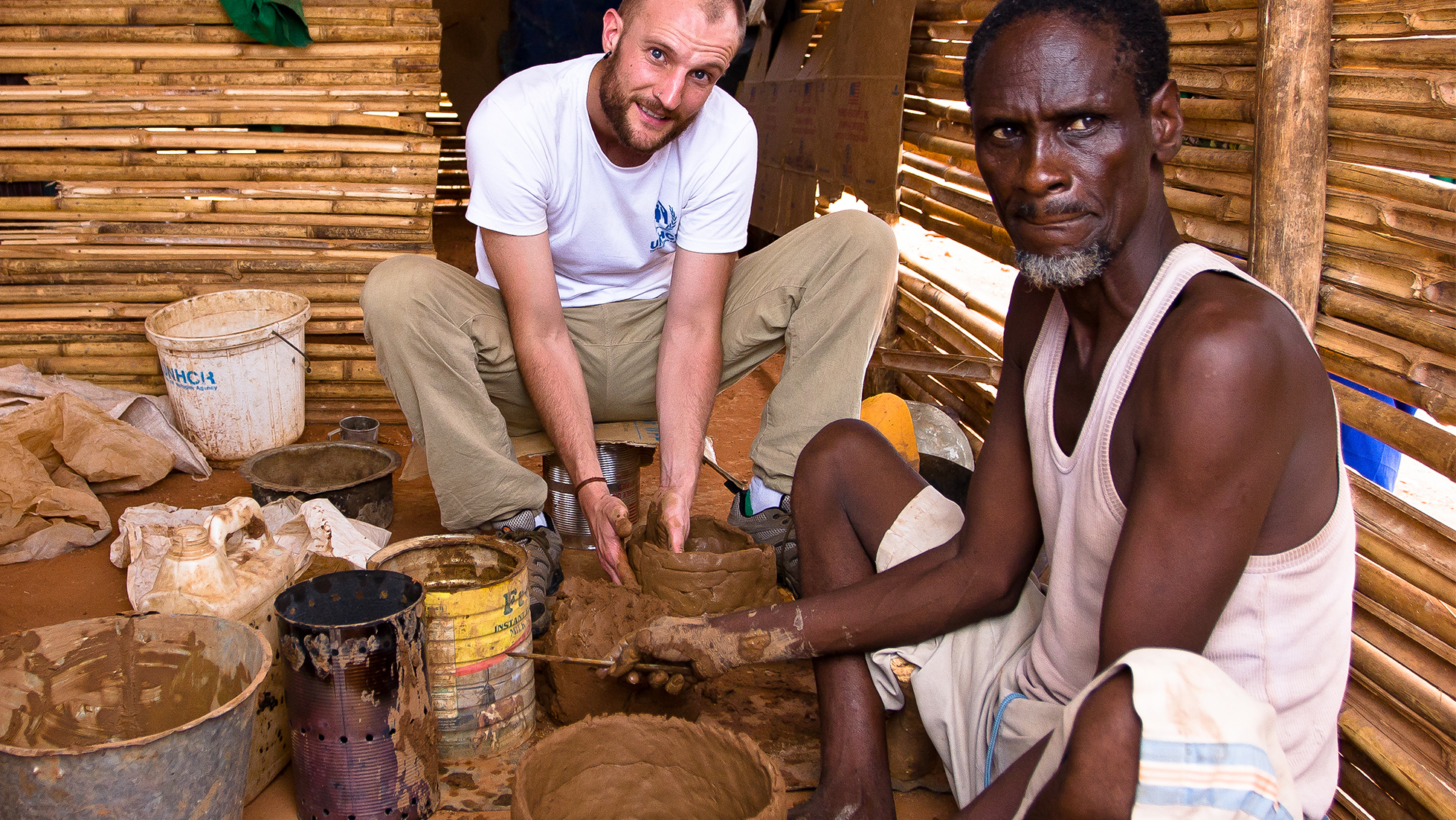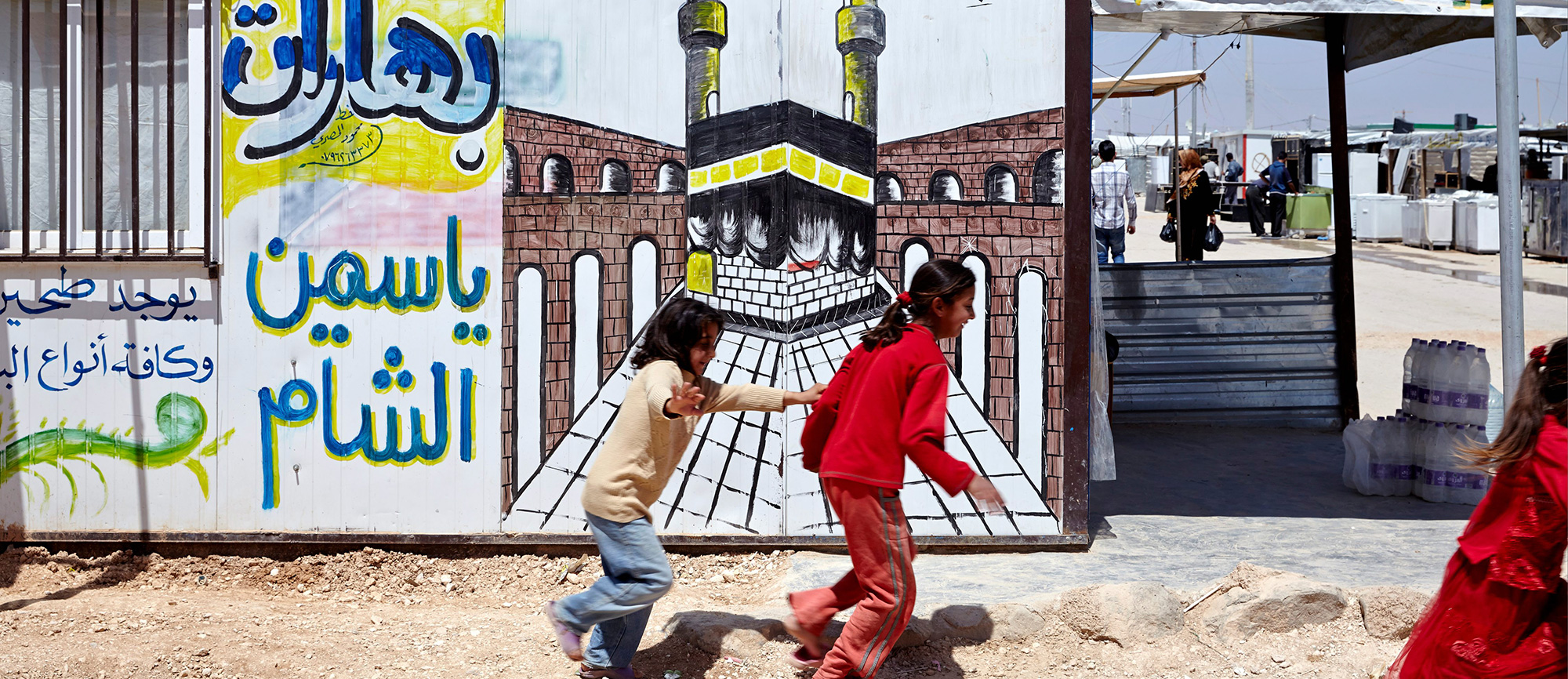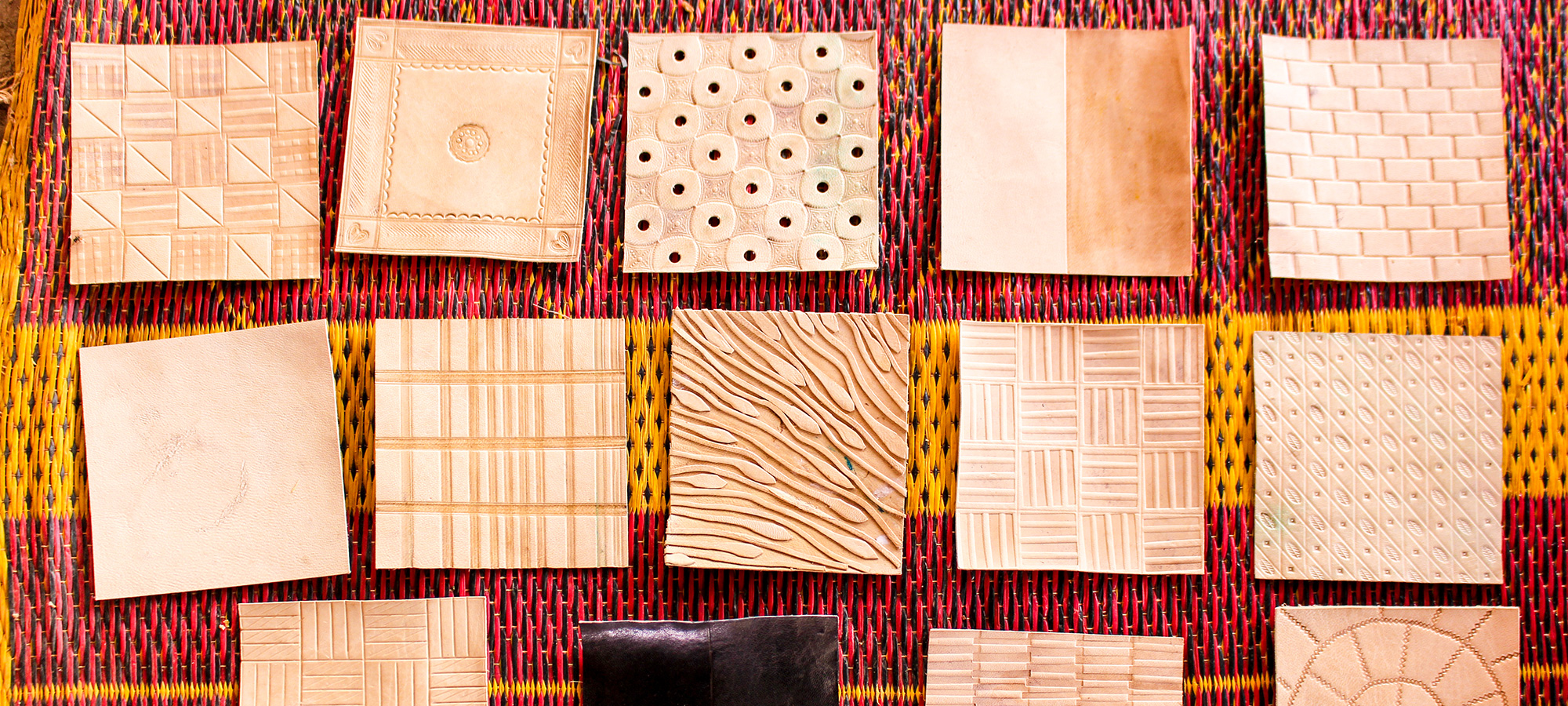1. Define challenges
Lack of sustainable fuel for cooking
When people flee their homes and countries and become refugees, they bring with them invaluable skills that sometimes go underutilized in a camp setting. UNHCR knew that in Ethiopia’s Dollo Ado camps, master craftspeople, electricians, welders, and others could not only help identify the most pressing energy challenges, but take a leading role in solving them.
UNHCR’s Energy Lab visited each of the five camps of Dollo Ado, conducting more than 40 interviews, focus groups and informal community discussions about the main problems involving fuel and energy. With help from a team focused on livelihoods, it established refugee advisory committees and asked them to identify energy challenges – but only those they believed they as a group could help address using the skills they have.
One of the issues the refugees kept bringing up was the lack of sustainable fuel for cooking.
Women in particular used up a lot of firewood preparing food in pots of boiling water balanced on three stones over an open fire—a cooking method that besides being time-consuming and dangerous, is also very inefficient.
Open fires consume large amounts of wood, and because trees are scarce in this desert region, it heightens the tensions between refugees and host communities. The sparse native acacia tree has been so depleted by woodcutters that the Ethiopian government has banned its harvest.
Moreover, collecting firewood as trees diminish means wandering farther and farther from home. This puts the women and girls who are often assigned this task at particular risk of assault.
Refugees in Dollo Ado needed a safer, more fuel-efficient way to cook. And it was a problem they were confident that with some support from UNHCR, they could address themselves.

A meal is being prepared, using firewood for fuel.
2. Identify solutions
Working with end users to address community needs
Clearly a way to increase fuel efficiency in cooking would be to use a stove that required less wood.
More fuel-efficient stoves had been distributed before in Dollo Ado. But the community never adopted them well; they were too small for most of the meals refugees wanted to cook. The women responsible for the cooking perceived the metal stoves as foreign and dangerous, and their small size and instability made them ill suited for much other than boiling water and making soup.
The Energy Lab knew if it were going to address an energy challenge in Dollo Ado, it was essential to work with end users to identify solutions.
In addition to brainstorming with the refugee advisory committees, the Energy Lab, and the livelihoods team visited as many households as they possibly could to ask about cooking habits, firewood collection, and the types of stoves that had worked for them before or might work in the future.
The women said that if fuel-saving stoves that burned wood or preferably charcoal were large enough to cook with, they would not only be willing to use them, but they’d be willing to purchase them. Restaurants and school kitchens agreed.

3. Test solutions
Energy perspectives vs Cultural perspectives
With a goal of producing a fuel-efficient, culturally acceptable stove now in mind, the refugee advisory committees went back and held wider discussions in the community, then came up with ideas for new stove designs. They explained their choices and rationale, and got the green light to create prototypes of four models for testing.
The approved designs echoed the traditional three-stone cooking method that refugees were familiar with by using a stable three-pronged pot support system. They also addressed concerns like strength, balance, heat, and the need to minimize smoke and ash. All were made of clay, an inexpensive material that is already part of Somali cooking culture.
Just four days later, the refugees brought back the newly designed cook stoves, along with pots, kettles and firewood to test them out. They explained what they liked, what they didn’t like, and why each stove looked the way it did.
There was one problem. None of the design choices focused on fuel efficiency.
The teams of refugees had prioritized their feel, ascetic, shape, size and the way it allowed them to cook. All important factors, of course. But from an energy perspective, something was still needed.
4. Refine solutions
Hybrid Stoves: A new perspective
Asked if they’d be interested in the Energy Lab’s input, the refugees welcomed a new perspective. The Lab suggested that they could try using oil cans from a USAID distribution to create a hybrid stove—something between the clay-based stoves they had designed and a fuel efficient stove one might find available commercially.
The stove makers discussed the idea and the concept of gasification, an industrial process that heats carboniferous fuel to release volatile gases. By nesting a perforated oil can inside the clay stove, gas released from wood or charcoal arranged outside the can flows in.
The result burns hotter and cleaner than an ordinary fire, all while using readily available and free materials that refugees at Dollo Ado have easy access to.
With the refugees’ buy-in for a hybrid stove, they all sat down with renowned local potter called “the engineer” who had constructed his own potter’s wheel from scratch. He was able to put the new prototype together in just one day—a group achievement that staff from the Energy Lab said was “absolutely incredible.”
As they tested the stove, the large group discussed what they liked, what they didn’t like, and whether they’d be willing to change the way they built a fire: The hybrid stove requires feeding smaller pieces of wood through the top instead of the traditional method of long sticks in the side.
The direct feedback from the community was extremely positive. They thought the cook stove prototype would be acceptable to families and just as good at heating pots of water while saving firewood. Many of the refugees involved in testing the stoves said they would consider ordering one for their homes.

5. Scale solutions
In order to scale this solution within the context of Dollo Ado, the Energy Lab and the livelihoods team identified that both training and production of the new cook stoves would have to be ramped up.
However so far, this has not been possible. Stove production did continue. But due to operational constraints shortly after the project’s launch and the limited capacity for support from outside Dollo Ado, the project largely stalled before the more fuel efficient cook stoves—or a business model for producing them at scale—could be refined.
These challenges are helping UNHCR refine they way it provides support to its field operations. And it is hopeful that such a model could create sustainable livelihood opportunities should the project be continued and expanded in the future.
The Energy Lab’s work with refugee groups in Dollo Ado did show that local adoption of a new technology was not just possible, but embraced. It showed that people within the camps could develop fuel-efficient stoves with locally available materials.
And it proved that community members want to identify problems as well as resolutions, and want to test those solutions themselves—a best practice that ultimately provides the most useful feedback.










Pingback: #EnergyMatters: Women at Risk - African Clean Energy()
Pingback: The Dadaab refugee camp: An example of good practices in eco-entrepreneurship and environmental sustainability - AAE Home()